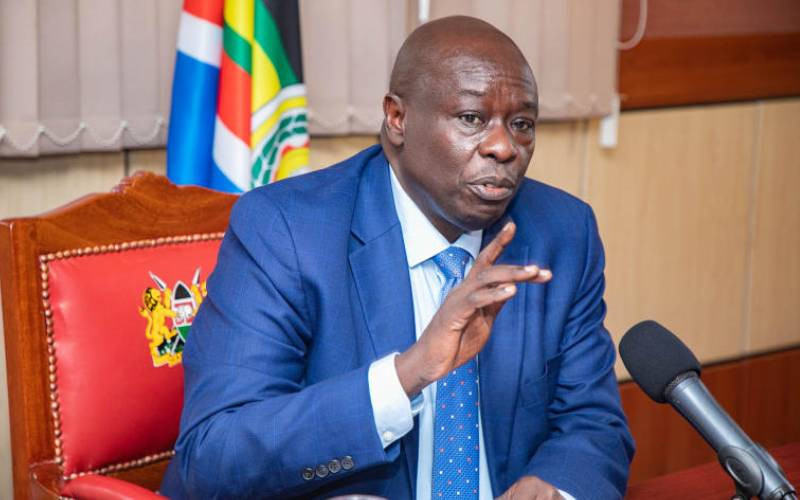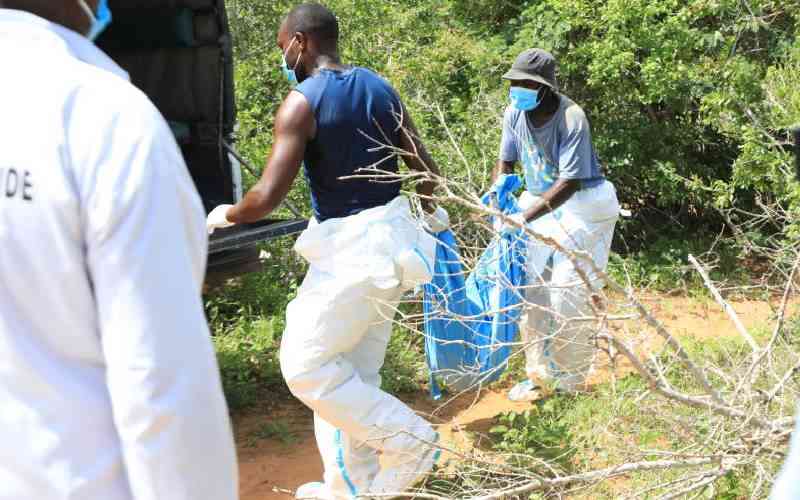Mombasa county has ambitious plans to manage its waste. Among the proposals is a plan to transform human waste from the sewerage into industrial charcoal.
When this is rolled out, the county may actually buy human waste from households, says Water, Environment and Natural Resources chief officer Rajab Babu Idd.
Idd says the county has partnered with Pivot company to explore the possibility of turning human waste into industrial charcoal.
“In the next two to three years, human waste pellets may be sold as industrial charcoal. What is now considered waste will be a resource for this county,” Idd says.
“We also plan to set up a garbage recycling plant through a public private partnership (PPP) arrangement as a long term solution to garbage management, he added.
The county has also partnered with a private organisation to provide 72 additional trucks to collect garbage, raising the number of garbage trucks to 78. Garbage collection centres have also been established in Mombasa island and some of the mainland sub-counties, says County secretary Hamisi Mwaguya.
“The residents are required bring garbage to these centres which are then transferred to dump sites. This has worked well particularly on the island. But we urge residents to take personal responsibility in the management of garbage to make the county clean,” Mwaguya says.
The county government currently spends Sh500 million every year to manage garbage in the city. Under a new arrangement, former street boys will be hired to guard trucks as they wait for the solid waste to be loaded onto them.
As a pilot, the county may introduce a scheme in which garbage is collected from individual homes and each household will be required to pay Sh200 every month. County executive for Water and Environment Fatma Awale and Mwaguya say consultations over this scheme are ongoing.
Youths’ role
“We will have groups of youths collecting garbage from households and the Sh200 raised from each household will be used to pay them. We plan to launch a pilot project in Nyali and Changamwe later this year,” Mwaguya said.
Business operators will be consulted over whether to introduce a garbage charge.
Previously, the county government had proposed a monthly charge of Sh50,000 for each supermarket and Sh20,000 for hospitals. It was also proposed that go-downs pay Sh30,000, grocers Sh1,000 and restaurants Sh4,000 per month but this has been put on hold. Ms Awale says all businesses will be encouraged to place dustbins to ease garbage collection and a sensitisation campaign for residents will stepped up to encourage the responsible management of garbage.
The city generates up to 1,200 metric tonnes of garbage a day.
Other programmes to make Mombasa attractive have also been rolled out. After evicting hawkers from the central business district, the county has launched an elaborate beautification programme along main city roads such as Jomo Kenyatta Avenue, Moi Avenue, Nyerere Avenue, Nkrumah Road Haile Selassie Avenue and Abdul Nasser Road on Mombasa island. Similar programmes will be extended to five other sub-counties. The county government plans to establish 70 youth groups each with 15 members to engage in organised garbage collection, officials say.
Stay informed. Subscribe to our newsletter
But those in the tourism industry feel that a lot still needs to be done to improve cleanliness. Efforts to clean up the city have frequently failed in the past, says Mr Sam Ikwaye, the Coast executive officer of the Kenya Association of Hotelkeepers and Caterers.
Mombasa governor Hassan Joho has since signed a Sh4.8 billion agreement with Bamburi Cement Limited managing director Hussein Mansi for a joint solid waste management plant to generate energy for cement production.
Garbage for the coastal city is mainly transferred to the Mwakirunge dumpsite located some 15 kilometres away from the CBD.
Previously, the city relied on Kibarani dumpsite near the Makupa causeway. The city is estimated to have a night population of 950,000 people and a larger day population of about 1.2 million people who contribute to the increased generation of solid waste.
 The Standard Group Plc is a
multi-media organization with investments in media platforms spanning newspaper
print operations, television, radio broadcasting, digital and online services. The
Standard Group is recognized as a leading multi-media house in Kenya with a key
influence in matters of national and international interest.
The Standard Group Plc is a
multi-media organization with investments in media platforms spanning newspaper
print operations, television, radio broadcasting, digital and online services. The
Standard Group is recognized as a leading multi-media house in Kenya with a key
influence in matters of national and international interest.
 The Standard Group Plc is a
multi-media organization with investments in media platforms spanning newspaper
print operations, television, radio broadcasting, digital and online services. The
Standard Group is recognized as a leading multi-media house in Kenya with a key
influence in matters of national and international interest.
The Standard Group Plc is a
multi-media organization with investments in media platforms spanning newspaper
print operations, television, radio broadcasting, digital and online services. The
Standard Group is recognized as a leading multi-media house in Kenya with a key
influence in matters of national and international interest.






